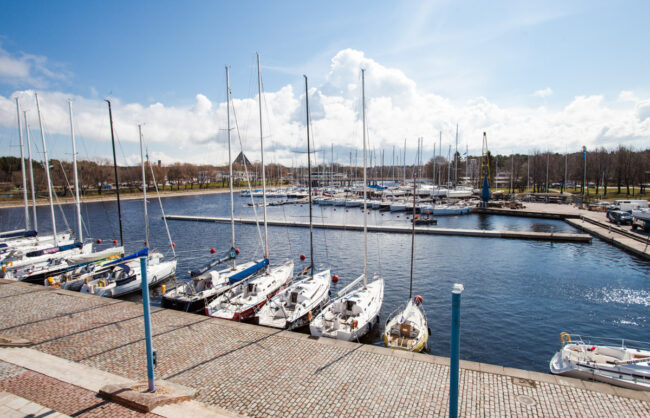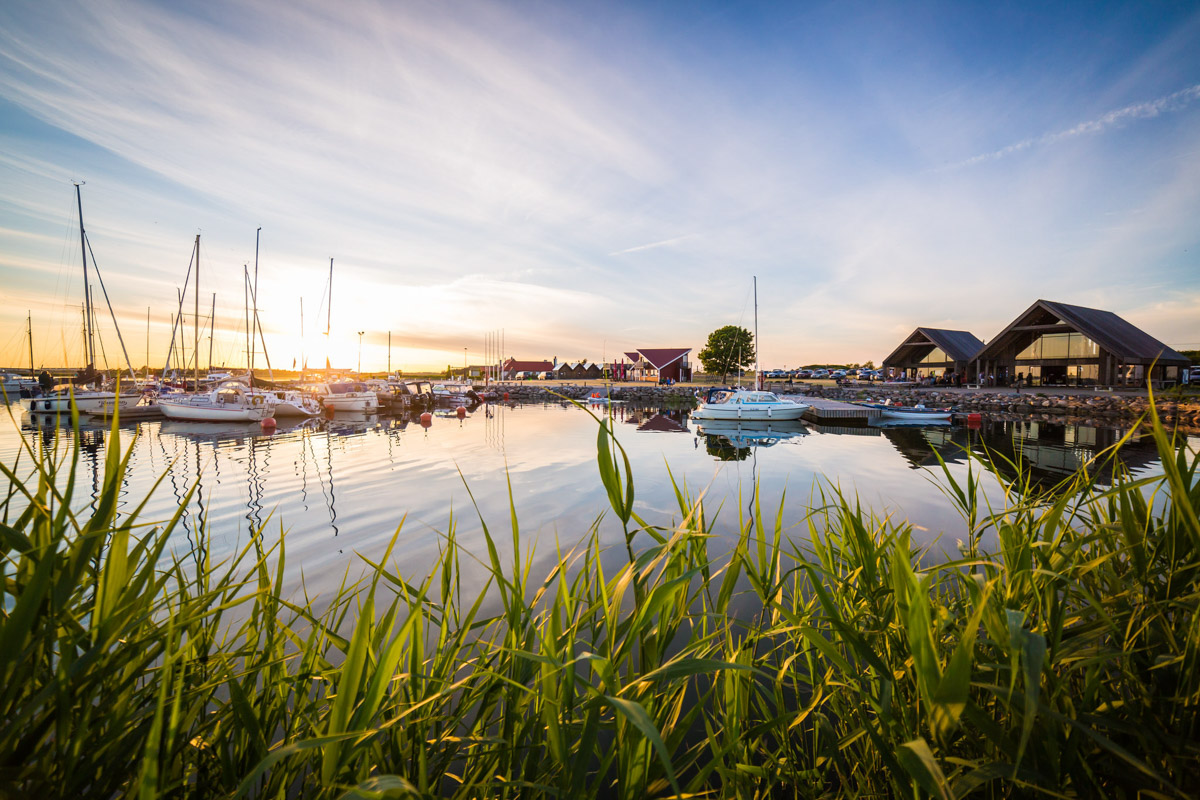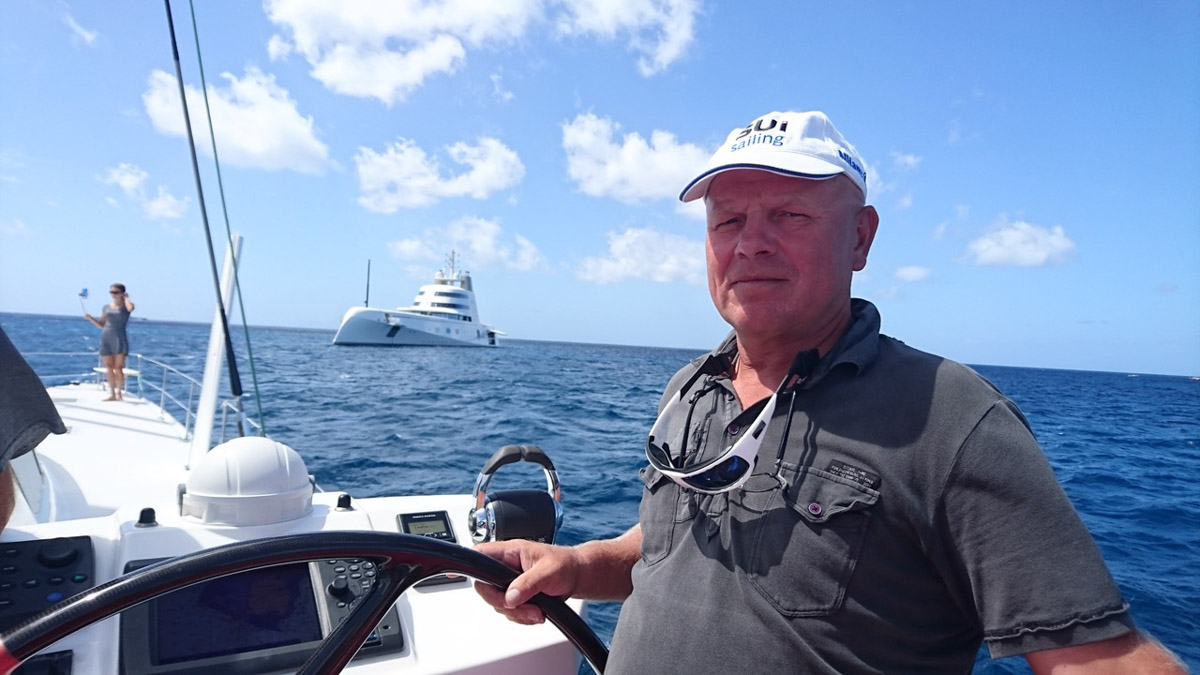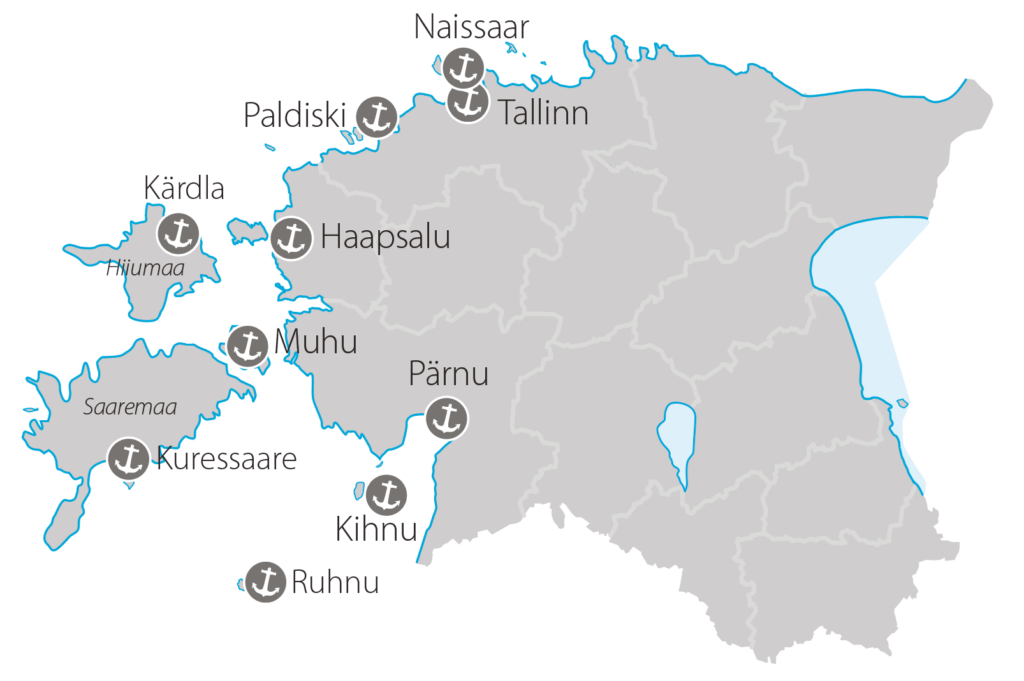Sailing on the west coast of Estonia
Text Ville Paija Photos Anton Keks / Unsplash, Andrei Chertkov, Hiiumaa tourism cluster, Alar Volmer's photo archive
 Pirita's guest marina is already quite familiar to many Finns and sailors from around the Baltic.
Pirita's guest marina is already quite familiar to many Finns and sailors from around the Baltic.
The west coast of Estonia hides a lot of interesting history and culture. German castles, medieval towns and spas. For sailors, there is fresh fish, excellent restaurants and renovated guest marinas.
Tallinn is a familiar destination for Finnish and international sailors and boaters. But the west coast of Estonia will certainly surprise a sailor who has experienced Tallinn and the Gulf of Finland, offering a completely different experience.
“You can easily spend a month on the west coast. There is a lot to see,” says Alar Volmer, the grand old man of Estonian sailing.
Volmer started sailing more than 50 years ago. He has competed in almost all Olympic sailing classes, also succeeding in the legendary Star class. Volmer participated in the Whitbread Round the World competition 1989–1990 in the crew of Hjallis Harkimo. Nowadays, he sails in the international Louhi class.

Volmer recommends heading to Naissaar, which is less than ten nautical miles away from Tallinn. Naissaar was part of Peter the Great’s chain of fortresses, like many other pearls of the archipelago. It also played a significant role in the Second World War, when the Finnish radio monitoring station was located there.

“When sailing west, you should avoid the port of Paldiski and spend the night in the port of Dirhami, which is a good day’s journey away,” advises Volmer.
From Dirhami, continue sailing to Estonia’s second-largest island, Hiiumaa, and its main city Kärdla. The total distance as the crow flies is just under 30 nautical miles. Hiiumaa has been inhabited for 4,000 years. The German Teutonic Knights ruled the island from the 13th century. Later the Swedes and Danes arrived. The effects of Swedish settlement can still be seen in the town of Kärdla. There are various museums, galleries, shops, cafes and restaurants in the area.


The Kõpu lighthouse, which dates back to the 16th century, is one of the world’s three oldest still-functioning lighthouses. Ristna and Tahkuna lighthouses were designed by Gustav Eiffel, the designer of the Eiffel tower in Paris
The next place to stay is the island of Muhu, known for its wonderful rocky beaches and diverse event culture. But soon, the bow has to be directed towards the island from which Georg Ots sang his famous song. The capital of Saaremaa, Kuressaare, was born around the bishop’s castle built in the 14th century, which is the region’s most significant attraction. The city already became a popular holiday centre in the 18th century. Saaremaa has a rich music scene, and the Opera Festival attracts large audiences every July.

“Kuresaare is the pearl of our entire coast and a ‘must go’ destination. Roomassaare harbour is a well-equipped guest marina. Kõiguste, which opened last year, is also an excellent alternative, it is run by Finnish sailor Niklas Jansson“, recommends Volmer.

When Pärnu is your ultimate destination, you should also stop by Kihnu, which is called the island of sailors and fishermen. Kihnu’s unique traditional culture consisting of national costumes, dialect, music and handicrafts is one of the gems of UNESCO’s list of intangible cultural heritage.
“Pärnu is a real summer capital. If you want to find a place where there is no rush, you should sail to Ruhnu island. Time stops there,” promises Volmer.
On the way back, Alar Volmer recommends stopping at least in Haapsalu. There, too, you can find a 13th-century castle, spas, good restaurants and lots of music.
“You can easily spend a month in the western archipelago. Our coast is shallower than in Finland. You can’t sail quite as close to the shore. Or where you can, you should use a map”, Alar Volmer reminds.
The coast of Estonia is very rugged. Sea chart sets can be obtained from boat shops or by ordering online.

Estonia’s special sailing history
Finnish racing sailors know that Estonians are often difficult to beat. Many have wondered where the country’s strong racing sailing culture comes from.
Estonia’s most famous sailor Alar Volmer recalls his own history. He stepped on a sailboat for the first time in 1970. At that time, Estonians lived under the rule of the Soviet Union.
“During the Soviet era, sport was part of politics and financed on behalf of the state. Competing was tough. I turned 30 when the Soviet Union fell. A pretty big group of us were professional athletes back then,” Volmer recalls.
After World War II, the Soviet racing boat factory was located in Tallinn, and the city became the centre of racing sailing. However, there were no travel or family boats in Estonia, because they would have made it possible to defect to the west.
“But racing sailing was possible, and it wasn’t about money. I got the same salary when I switched from other jobs to a professional sailor,” says Volmer.
The Star class is Volmer’s long-time love. “We won the qualifiers for the Los Angeles Olympics, but unfortunately, the Soviet Union decided to boycott those games. Fortunately, those days are behind us”, sighs Alar Volmer.

To learn more about this and similar topicsAlar Volmer Kihnu Kuresaare Kärdla Ruhnu Sailing Sailing Estonia Sailing Tallinn









